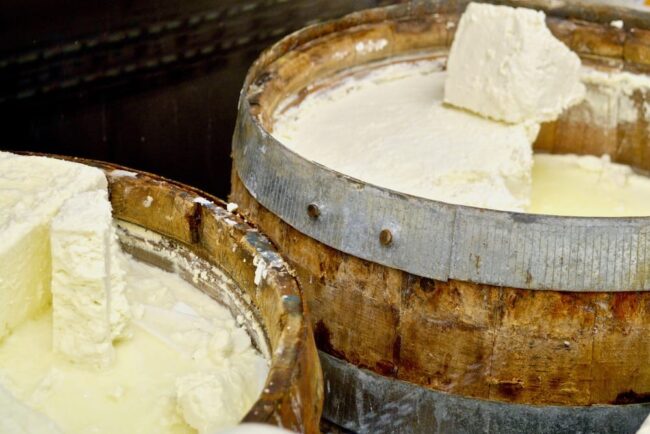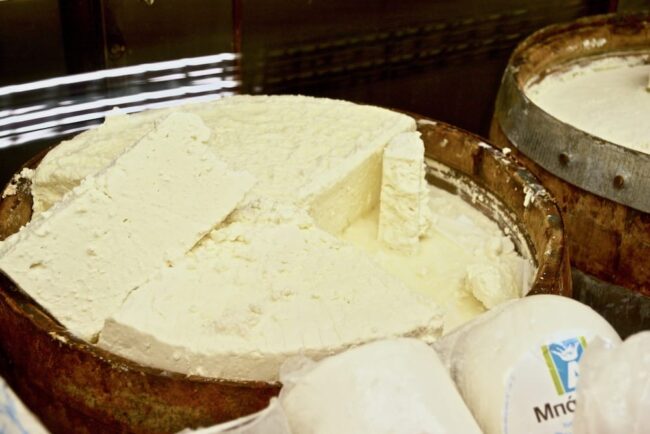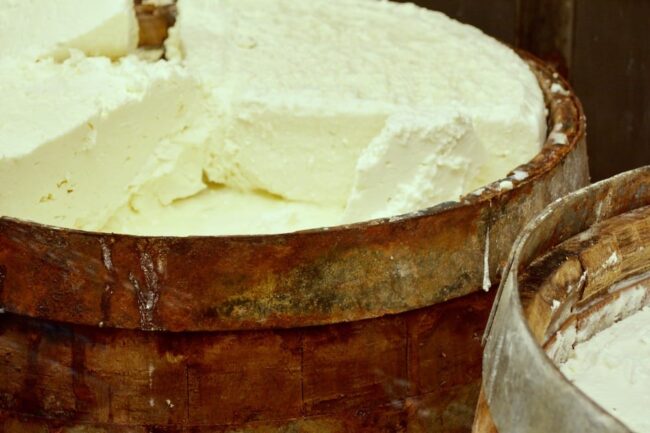Pantry Essentials – Feta Cheese

Feta cheese is undoubtedly one of the most popular Greek foods outside of Greece. Most think of it as an ingredient used for Greek salads, which it is. However, share a few meals with a Greek family and you will quickly realize that feta consumption is far broader than a simple accoutrement for ones salad.
In Greece, feta is served as a table cheese, in that a large slice is placed on a plate in the center of the table. Each person is then free to serve themselves during the course of the meal. The brininess and texture complements the flavors of the many vegetarian dishes in Mediterranean cooking such as spinach and rice, stuffed peppers and tomatoes, stewed green beans, or roasted vegetable medley. Of course, as with most foods, there are different types of feta. Following are some of the things to consider when making a selection.
Buying Feta
First, there is the consideration of sheep versus cow ‘s milk. Traditionally, feta is made from sheep or a combination of sheep and goat’s milk. In addition to providing a more complex flavor profile, there is some interesting research that suggests that sheep milk’s molecular composition is easier to digest than other dairy. That said, not everyone enjoys the flavor of sheep’s milk, making cow’s feta a good alternative.

Next is the question of texture. Some fetas are firm and crumbly while others are softer and creamier. Similar to flavor, texture is a matter of personal preference. However, you may find that different textures work better for certain recipes. For example, when making spinach pie, I prefer to work with a firmer and brinier feta, which ensures that the pie is sufficiently salty. The same holds true for fried feta, which needs to hold its shape when cooking. Conversely, I prefer to work with a creamier feta when preparing a spinach or purslane salad.
Another determining element when selecting your feta is its packaging. Unlike the United States, where a majority of feta is distributed in 8oz vacuum packed plastic or pre-crumbled 4oz plastic tubs, fetas in Greece are displayed in the large tins or oak barrels in which they have been aged, as pictured above. Traditional barrel aged fetas are most easily found at Greek import shops. In addition to tasting delicious, they are often priced more advantageously than those sold at traditional grocery stores.
Storing Feta
When storing your feta, be sure to either keep it in an air tight container or submerged in a salt-water brine to ensure that the cheese does not dry out. Also, avoid storing your feta in the freezer as this will alter the consistency of the cheese. The good news is that freezing isn’t necessary as feta’s high salt content allows it to keep for many months if stored in a cool place.
Whichever feta tickles your fancy, what matters most is appreciating that there is more than one type out there. So enjoy tasting and sampling, that’s half the fun!

